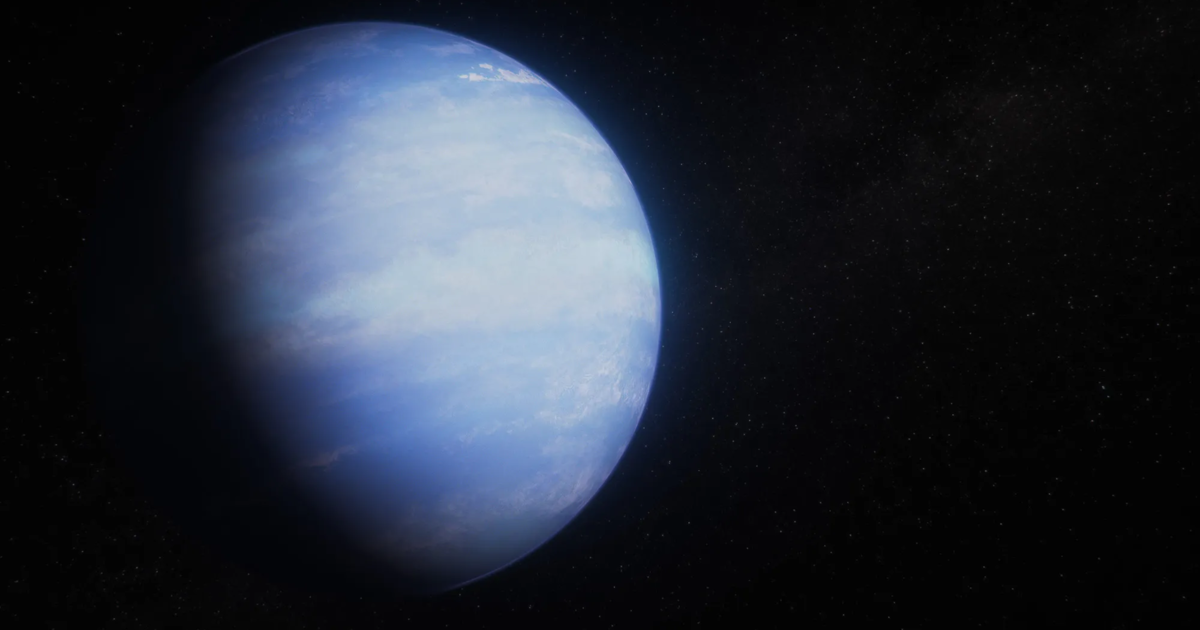

The James Webb Space Telescope (JWST) is revolutionizing our understanding of exoplanets, and one of its recent triumphs is shedding light on a long-standing puzzle: why some gas giant exoplanets appear so "puffy." These planets, often referred to as "hot Jupiters" due to their proximity to their stars, possess significantly larger radii than expected based on their mass. This low density, resulting in their puffed-up appearance, has baffled astronomers for years. Previous theories proposed various explanations, including internal heat sources and atmospheric composition. However, JWST's unparalleled infrared sensitivity has allowed for detailed atmospheric analysis previously impossible. By observing the transmission spectra – the light from a star passing through a planet's atmosphere – JWST can identify specific molecules present. This detailed analysis is crucial because the composition and abundance of these molecules directly impact the planet's atmospheric structure and temperature. The JWST's observations have shown a strong correlation between the presence of certain molecules, particularly metal hydrides like iron hydride (FeH) and vanadium oxide (VO), and the degree of inflation in these hot Jupiters. These molecules are strong absorbers of infrared radiation, effectively trapping heat in the upper atmosphere and preventing it from escaping to space. This heat retention causes the atmosphere to expand, resulting in the observed inflated radii. Essentially, the JWST is revealing a crucial feedback loop. The presence of specific molecules, determined by the planet's formation history and atmospheric dynamics, dictates the amount of heat trapped, thereby influencing the planet's overall size. This finding provides strong support for models that emphasize the role of atmospheric chemistry in shaping the physical properties of these exoplanets. Furthermore, the JWST's ability to detect subtle variations in atmospheric temperature and pressure profiles adds further nuance to our understanding. It's not simply a matter of the presence or absence of certain molecules, but also their distribution and concentration at different atmospheric levels. This level of detail is crucial for refining atmospheric models and gaining a more complete picture of the complex physical processes at play. In conclusion, the JWST is not just confirming existing theories about puffy exoplanets; it's providing the granular data needed to build significantly more sophisticated and accurate models. This advancement significantly improves our understanding of planet formation, atmospheric dynamics, and the diversity of planetary systems beyond our own solar system. The puzzle of the puffy planets is far from completely solved, but JWST is providing the crucial pieces to complete the picture.

Astronomers believe they've solved a peculiar and well-established cosmic mystery, NASA this week. Mainly using observations from the James Webb Space Telescope, two groups of researchers may have discovered what causes certain planets far beyond the sizes their remarkably low densities would suggest.
It's a phenomenon that seems to boil down to the surprising internal composition of exoplanets like WASP-107b, a "warm Neptune" gas giant identified in 2017 that orbits a star about 200 light-years from Earth. Although scientists have already identified thousands of low-density exoplanets, this one was different from the and even the uncommon studied before.
Astronomers looked at the makeup of WASP-107b in hopes of understanding how it could be so massive while weighing so little, since they assumed based on features like its size and the distance from its star that it was cooler internally than it turned out to be.
"Based on its radius, mass, age, and assumed internal temperature, we thought WASP-107 b had a very small, rocky core surrounded by a huge mass of hydrogen and helium," said Luis Welbanks of Arizona State University, who led one of the new studies on the exoplanet, in a statement to NASA. "But it was hard to understand how such a small core could sweep up so much gas, and then stop short of growing fully into a Jupiter-mass planet."
WASP-107b is nearly the size of Jupiter, but just about one-tenth of the density. The exoplanet weighs about the same as 30 Earths, while Jupiter weighs more than 300, making WASP-107b one of the least dense known planets, NASA said. That was odd because it is less hot and less massive than other "puffy" exoplanets, like the Jupiter-like deep-space gas giant , which was discovered last year and also noted for its extraordinarily low density.
While there was no evidence-based explanation for the puffiness of larger, hotter exoplanets, either, scientists said that WASP-107b was particularly hard to explain, because it doesn't glean enough energy from the star it orbits for the gases composing it to inflate so much. But new data from Webb, combined with older data from the Hubble Space Telescope, revealed another cause for its expansion.
The telescope observations detected only a tiny fraction of the methane gas that astronomers expected to find in WASP-107b's atmosphere, which "tells us that the interior of the planet must be significantly hotter than we thought," said David Sing of Johns Hopkins University, who led a second new study on WASP-107b.
That supports a theory astronomers previously proposed about why WASP-107b is "puffy," suggesting that a process called is responsible for both its warmer internal temperature and inflated size. Learning about the atmosphere of WASP-107b may also give crucial insight into dozens of other "puffy" low-density planets and what makes them expand, potentially helping to clear up what NASA called a "longstanding mystery in exoplanet science."





